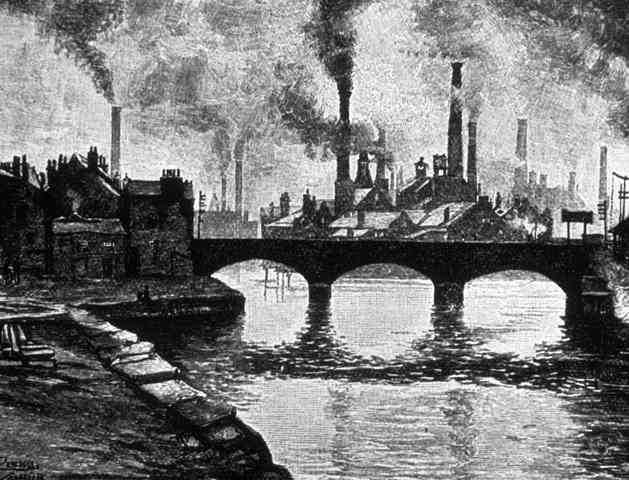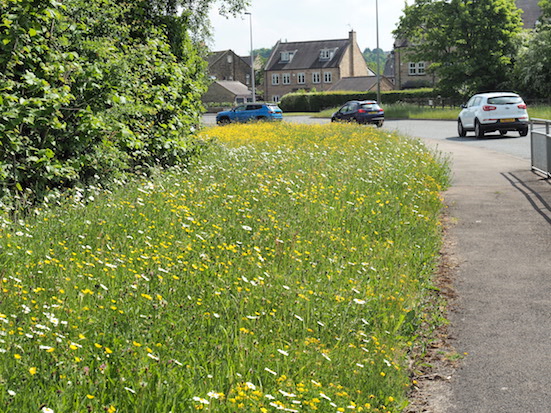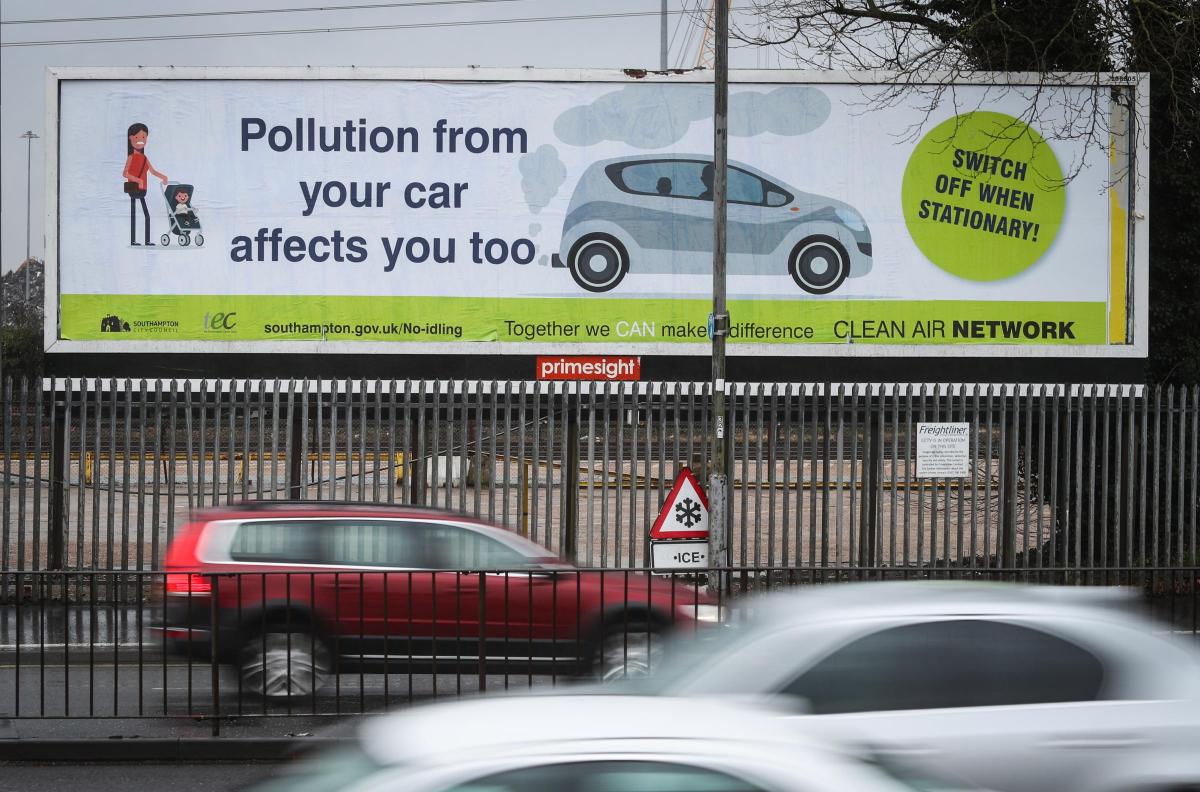You’d think in the midst of an ecological emergency — with frequent headlines about deaths resulting from air pollution — that idling would be a thing of the past. You’d think that sitting stationary, running your engine while the air around fills with toxins (around the equivalent of 150 balloons of toxic air per minute are emitted) would be considered anti-social behaviour. Sadly, it seems, neither is true. Perhaps because the toxic air is not visible it gives license to the idea that there is nothing wrong with idling. Or perhaps it’s a lack of awareness about what is coming out of an exhaust pipe (maybe drivers before passing their test should be given a lesson?). Either way, the frequency with which idling is occurring is testament to the fact that the message is not getting through.

From visible to invisible: the atmosphere as a dumping ground
The disregard for the atmosphere is not a new phenomenon. The past two hundred years have seen industrialisation across the world, with devastating consequences for clean air. Victorian Britain suffered with poor air just in the way that Asia does now. Air pollution in Victorian Britain was much more visible: factories belched out plumes of smoke, and coal miners found their lungs covered in coal dust. 21st century Britain however, suffers from an invisible type of air pollution. Most modern cars don’t emit black smoke, but do release toxic air. Its invisible nature makes it all the more dangerous.
At present, it seems that people are often idling their cars out of habit. This could be while waiting for a parking space (to be ready to move), or while parked in order to keep the heat or air con running. I see a lot of people idling while eating lunch. Others idle their cars in the erroneous belief that the engine needs warming up (yes, turning the engine on can melt the ice on frost days, but this problem could easily be overcome with a pair of gloves and an ice scraper).

Why idling is harmful to health?
All petrol or diesel cars emit harmful gases, including nitrogen dioxide, carbon monoxide and hydrocarbons – all of which are linked to asthma and lung disease. But an idling engine can be even more harmful than one in motion since it burns fuel less efficiently. A stationary car can produce up to twice the emissions of one in motion. The toxic gases produced are all concentrated in the same place, so localised air pollution is higher.
“Pollution from your car affects you too”
Air quality inside a vehicle is also an issue. Much like the misconception that SUVs are safer for those inside (even if much more dangerous to pedestrians than ordinary saloon cars) – air can be actually worse inside the car than out. The very fact that the billboard idling awareness advert — “pollution from your car affects you too” focuses on the own goal of idling, is already a worrying sign. Is it not enough to switch off your engine for the sake of others? For the sake of passers-by or cyclists?

Humans like any other non-human animal have the same instinct for self preservation. But idling is not a question of fighting for the last food scrap, or for the last drop of water, it’s — as the advert suggests — something that affects us all.
How best do we raise awareness?
This billboard campaign is one of two or three different styles of messaging to deter idlers. This one appeals to the individual’s own self interest, while others focus on the rules (threats of fines), and a third type try to invoke empathy: “no idling, young lungs at work”. The former “it affects you too” appeals the self preservation instinct – and is the central idea to many climate change campaigns: act now, or we humans face extinction.
But to truly save our ecosystems and begin to regenerate the health of the earth, we need to start considering others more, and valuing all life on earth. As such more thought-provoking messaging is needed to shift attitudes and bring about behaviour change. Does anyone stop think about the effect of their idling vehicle on a bird sitting in a tree, or a mouse scurrying beneath their exhaust pipe? The wildflowers overloaded with nitrogen oxide on the verges?

What’s the law surrounding idling?
While idling is an offense, in practice fines are very rarely issued – and only if a driver refuses to switch their engine off, and idles for a further minute. Even if they are issued, fines (at £20) – are too low to act as much of a deterrent.
It seems there is also some confusion about what is and isn’t allowed, or enforceable when it comes to idling. When I contacted my local authority to report a car that had been parked for an hour with the engine running, their initial response was “what about the idling bothers you?”. It surprises me that this question has to be asked. It seems obvious that air pollution is a very legitimate reason. The responses I got varied between “sorry, we can’t do anything” or – confusingly – that there’s nothing illegal about occupied vehicles idling.
With such lack of clarity and weak enforcement, it’s no wonder that 60% of drivers don’t even know that idling is an offense.
What can be done?
It falls to local councils to decide on how best to approach idling. Some councils place anti-idling signs that threaten fines. Others run “idling action events” where drivers are approached to politely request they switch off their engines. So that leaves passers-by the daunting task of asking drivers to switch off and hope for cooperation. Given the sense of entitlement that some drivers have – and the general levels of “road rage”, it takes a bold person to challenge a driver. But for central government and councils to also be tiptoeing around, sends entirely the wrong message.
Nonetheless, there is some sign of progress. In 2017, the government published the Clean Air Plan which encourages local councils to create “clean air zones”; highlights the dangers of nitrogen oxide; and recommends that the Government “re-examines its anti-idling policy guidance to assess whether higher fines and stricter enforcement mechanisms should be used”. This still leaves a lot of lee-way for councils and has mostly resulted in councils sidelining the problem. That’s a mistake. All towns are struggling to reduce emissions. Cutting down on totally needless emissions would be an easy win when compared to the much more complex task of reducing traffic.
In the absence of robust regulation to crack down on idling, then the next best hope is an awareness campaign. With growing numbers doing the school run, this is something schools are already trying to address. Some schools have introduced measures such as drop off zones, to counteract the spike in pollution during drop off and pick up times, although ultimately the best outcome would obviously be for children to walk, scoot or cycle to school.
Town centres also need to take action to raise awareness to protect the air quality for the people that live and work there.
A shared space, a shared atmosphere
As a society – and as a species, we must start thinking about our shared responsibility for clean air and a healthy planet. The idling phenomenon shows us all too clearly that we must move away from thinking only about our own comfort and convenience, or not thinking at all. We share the earth with other living creatures and plant-life and they too need clean air to thrive.
Further reading:
https://www.transportxtra.com/publications/parking-review/news/67077/quarter-of-parents-admit-to-engine-idling-on-school-run/
https://theconversation.com/toxic-cities-urban-wildlife-affected-by-exposure-to-pollutants-127590
https://www.theguardian.com/environment/2017/jun/14/air-pollution-is-killing-wildlife-and-people
https://www.express.co.uk/life-style/cars/1353645/uk-fuel-saving-petrol-diesel-owners-idle-car-engine-winter

